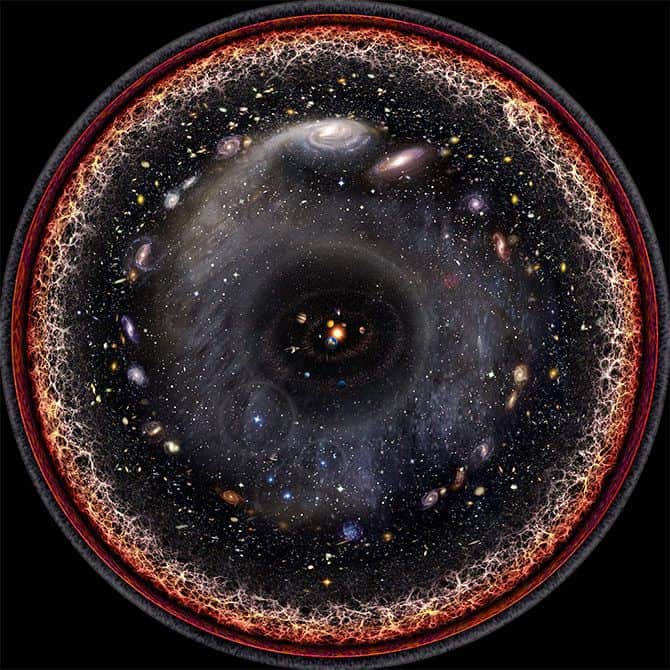The Size of the Observable Universe
A battle between light and space.

The size of the observable universe is a more complex idea than it appears at face value. It is widely known that the universe is approximately 13.8 billion years old. From this knowledge, it is logical to assume our observable universe is 13.8 billion light years in radius in all directions. However, our true observable universe is approximately 46.5 billion light years in radius (or about 93 billion light years in diameter). The reason for this discrepancy in initial logic (13.8 Bly) and scientific fact (46.5 Bly) is due to a battle between light and space.
An Expanding Observable Universe
Lets assume our universe is a flat piece of latex placed on a table. Now assume we paint galaxies on the piece of latex and that their motion through/on the paper is too miniscule to notice. Watching the universe from our perspective, continuous emissions of light from these galaxies are travelling through the universe at a fixed speed (the speed of light). Using this idea, it’s reasonable to imagine an imaginary circle around each galaxy which represents the visible range around that galaxy. That is, light can only travel so far in the time it has been given to travel (i.e., since we painted them on the latex) - and hence as time continues, this visible range of each galaxy grows at the speed of light. This expansion of visible range, due to the fixed speed of light and continuous flow of time, implies that more and more of the universe becomes visible with time - i.e., an expanding observable universe.
A Contracting Observable Universe
The reason why the true size of the observable universe is larger than the expected value of 13.8 Bly in radius is because the universe is expanding (discovered by Edwin Hubble in 1929). This rate of expansion, over the 13.8 billion year age of the universe equates to about 33 billion light years of additional space in all directions. Thus, the true size of our visible universe is approximately 13.8+33 Bly = 46.8 Bly in radius
Summary
The rate of the expansion of space exceeds the speed of light. Therefore, even though the universe is becoming physically larger due to its expansion, this also causes galaxies to be pushed further apart faster than their light travels to each other. Therefore, our observable universe is becoming smaller, but the space it occupies is becoming larger.
Extra Reading
The real kicker of this concept is that the expansion of the universe is accelerating (2011 Novel Prize in Physics: Saul Perlmutter, Brian Schmidt, Adam Reiss). Therefore, there will come a time (and a distance away from us), where galaxies at that distance are moving away from us (due to the expansion of space between us and them) faster than the speed of light. When this occurs, the light from such galaxies will slowly dim into nothingness and they will be lost to us forever (assuming the universe never begins contracting).